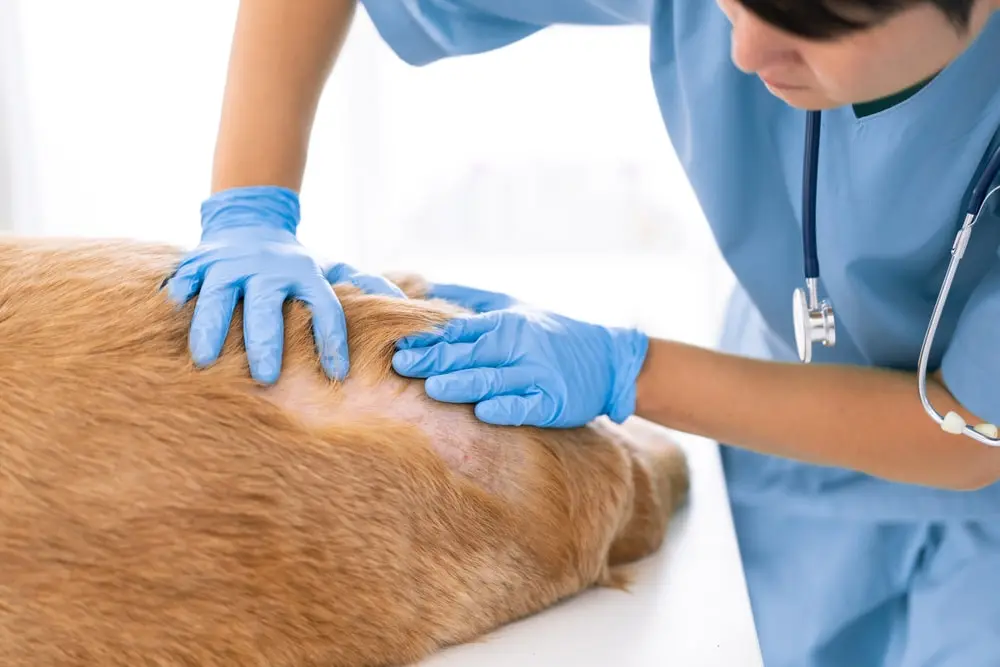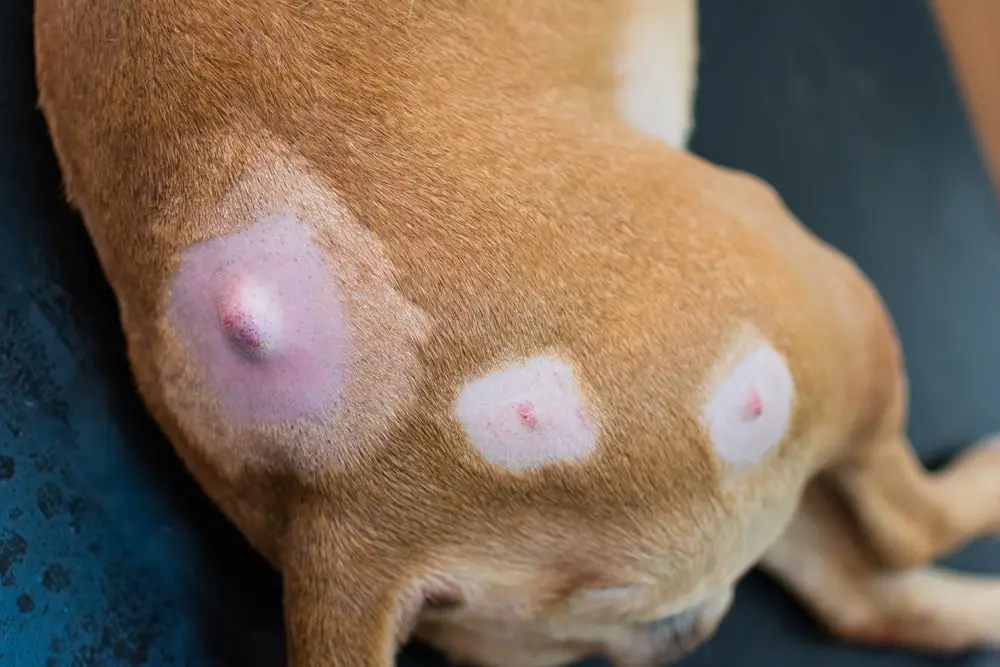PET HEALTH
Finding lumps and bumps on your dog can be scary, especially when you don’t know what they are. While it might be nothing to worry about, there could be cause for concern – especially if it goes unchecked.
Masses, like cysts and lipoma, are a common issue dogs can face due to a variety of factors. Read on to learn more about the different types of cysts on dogs, what to look out for, and when to get a veterinarian’s opinion.
What Is a Cyst?
A cyst is a mass found on or under the skin that’s filled with fluid or solid materials.1 They’re most often filled with keratin and dead skin cells, or sebum (an oily substance), but it depends on the type of cyst.
What causes cysts on dogs?
Cysts can be caused by a variety of factors, including blocked pores (aka comedones), infections, reactions to medication, or genetic predispositions.1 Here are a few breeds that may be at higher risk of developing cysts:1
- Basset hound
- Boxer
- Chinese crested
- Cocker spaniel
- Golden retriever
- Schnauzer
5 Cysts That Can Be Found on Dogs
There are a few different types of cysts found on dogs, including true cysts, dermoid cysts, follicular cysts, sebaceous cysts, and false cysts.2 While there are different internal cysts like ovarian or kidney cysts that you won’t be able to identify by simply touching your dog, there are some cysts you can identify that are closer to the surface of your dog’s skin.1
True cysts
A true cyst has a membrane that lines the cyst and produces secretions like sebum.2 They often show up where your dog’s glands are located like the head, neck, and body. These cysts are typically a result of a blocked duct, which causes excess oil production in a concentrated area. They can be removed surgically, but the membrane must be removed in its entirety to prevent the cyst from returning.2
Dermoid cysts
Dermoid cysts are considered to be rare, and usually caused by genetic predispositions.1 When these cysts occur, there’s a separation of the top layer of the skin from the tissue underneath.2 Similar to a true cyst, a dermoid cyst can also be removed with a surgical procedure.
Follicular cysts
Follicular cysts — also known as epidermoid cysts — are one of the most common forms of cysts found on dogs.2 They appear as the result of inflamed hair follicles, can vary in color and texture, and can even be accompanied by a foul odor.1 They can be found around the mouth and the legs, and often clear up on their own.
While it may be tempting to pop these cysts when you see them on your dog, it’s best to leave them alone to avoid infection. If you notice a cyst growing in size or it appears to be infected, consider consulting your vet to see if medication or surgery is needed.
Sebaceous cysts
Sebaceous cysts are caused by oil glands in the skin and are also fairly common. They can be found around the head, neck, and the tops of your dog’s legs.1 Sebaceous types of cysts on dogs can easily become infected or even become cancerous if they don’t go away on their own. So it’s important to monitor them closely to avoid bigger problems from developing.3
False cysts
A false cyst does not have the membrane that other cysts have.2 They’re often the result of a trauma to the area, where dead tissue builds up to create what looks like a cyst from the outside.2 Most false cysts go away on their own once the trauma heals.
What Do Cysts on Dogs Look Like?
When it comes to cysts closer to the surface of the skin, they generally look like raised bumps that you can feel on or under your dog’s skin. Since their contents are different, cysts can vary in size and texture, be soft or firm, or even be accompanied by a foul odor. Here are a few other cyst identifying factors:2
- Translucent, blue, or dark in color
- Discharge that’s white, gray, brown, yellow, or thick
- Missing hair around the cyst
Diagnosing and Treating Cysts on Dogs
To formally diagnose a cyst on your dog, whether it’s on an internal organ or on the surface of your dog’s skin, a biopsy is needed.2 This can determine the cause of the cyst, identify any underlying conditions, and inform your treatment options.
When it comes to figuring out how to treat a cyst on a dog, consult your vet for an opinion. While some cysts go away on their own, your vet may recommend surgery to excise the cyst and ensure it won’t return, or prescribe antibiotics to help combat infection.1
Avoid letting your dog bite, scratch, or lick a cyst, as it could cause bleeding or an infection. To prevent this from happening, consider wrapping the area and keeping it clean. This can also be a good idea if your dog undergoes surgery to remove the cyst — wound care is an essential step in the healing process for your dog, so be sure to keep the area clean and dry.2
When to take your dog to the vet
Cysts are typically not a reason to panic, but you may want to bring your dog to see a vet if the cyst causes pain or continues to grow in size and becomes large.1
How Pet Insurance Can Help With Cysts
Diagnosis and treatment of cysts on your dog can be costly, especially if surgery is involved. The good news is that a dog insurance policy with MetLife Pet Insurance may help offset the cost of care for covered expenses like surgery, hospital stays, prescription medication, and even holistic treatments.4
If your dog is a breed that’s predisposed to cysts, investing in a policy early could save you long-term before cysts become a pre-existing condition. Learn more about how pet insurance can fit into your lifestyle and get a free quote.


